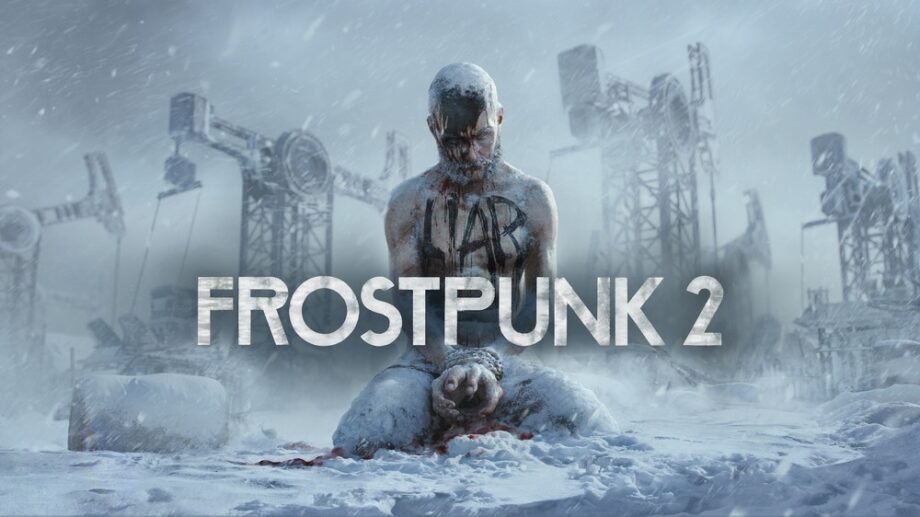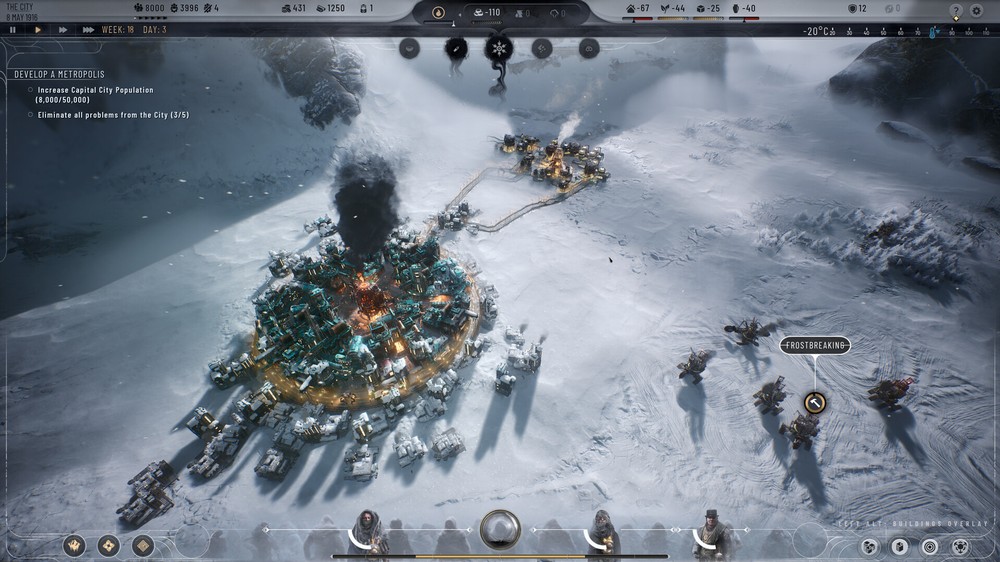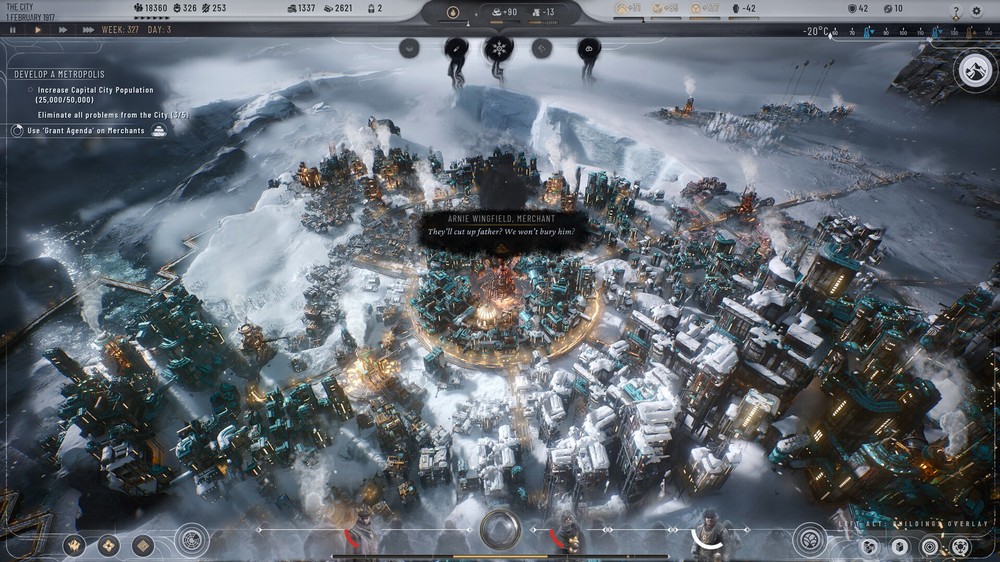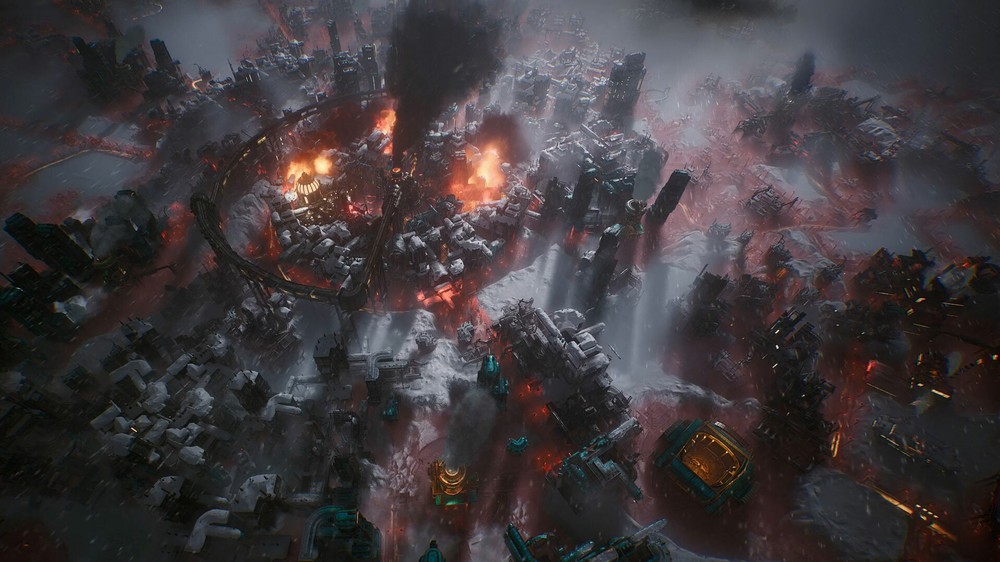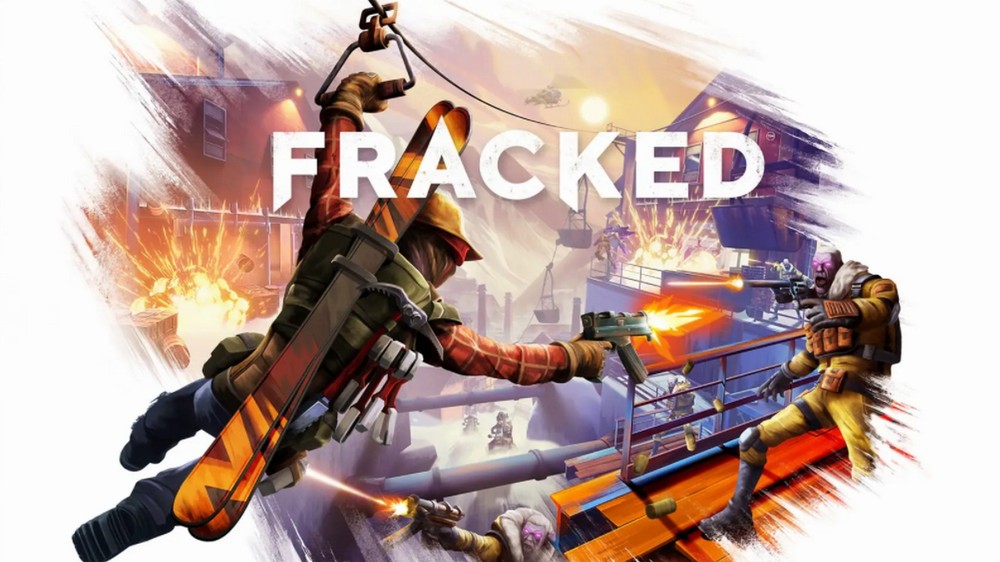Frostpunk’s mix of city building and survival elements delivered a devilishly fun game that saw players exploring the trappings of child labor and feeding their citizens sawdust-laced soup, all in the name of surviving the cold. At the intersection of apocalypse and challenging morality, 11 Bit Studio’s first foray into the deep cold of New London was a surprise hit in 2018. Six years later, Frostpunk 2 looks to do more of the same, but with some major changes to city building, resource management, and law passing. Not all changes land as well as they could have, especially from the city building aspect. The result is an experience that can be jarring for players of the first game early on but sticking with it you’ll find an even deeper experience well past the game’s story mode. In an industry where sequels scarcely take risks out of fear of alienating the fans, Frostpunk 2 walks out on thin ice praying for the best and comes away mostly unscathed.
Set 30 years after the first game, Frostpunk 2 finds New London amidst a time of momentous change. The Captain (the player character from the first game) has passed making way for the Steward to take charge along with his newly appointed Council. The central generator also faces change as New London migrates from coal dependency to alternate fuels. I love the exploration of change as a central theme in the story mode. It paints a nice picture ahead of the game introducing its new mechanics to players. Aside from the short cutscenes between each chapter, there’s not much here story wise, but that is a given since most of the story is playing out real-time as you make your decisions concerning New London and its surrounding area.
At first sight, not much seems all that different. New London is still dependent upon the generator at the center of the city for its heat. You start to discover some of the gameplay changes with one glance at the game’s UI. City building is no longer locked to a circular grid. The tedious task of building and connecting roads has been replaced by Frostbreaking, which clears the hard ice from the surface and allows you to build districts on cleared tiles. There were a few times where I would go to build a district and realize I had not yet frostbroke the area. It’s annoying and can be a mild inconvenience that slows things down, but I will take it over trying to line up circular roads.
Districts serve unique functions in New London. Building an extraction district over a coal mine or an oil field will send workers into a mine or drill for those resources. Food districts let you grow and store food. Housing district will house your masses and contain community hubs like the fighting hub (more on that later). Each district can be updated through researching new hubs or new equipment. These upgrades can affect heat needs, workforce needs, and resource output in these districts. When it comes to resources, the name of the game is stockpiling until the area is depleted. Once depleted, districts can be demolished, returning the resources you originally spent to build it. I did find myself wishing there were an option to convert space, instead of outright destroying a district and rebuilding another, just in the interest of saving time. For example, I found myself days away from a White Out still needing some additional homes for my citizens. My recently defunct extraction facility would have been a perfect place for homes, but the time needed to demolish the old district and then replace it, mixed with my poor planning, left some New Londoners out in the cold.
Frostpunk 2 also changes how it deals with the Frostlands and exploration. You still send expedition teams out to nearby points of interest in search of resources and people. Where the differences start to kick in are the inclusion of building colonies outside of New London and managing the cold on multiple fronts. You are no longer struggling to survive in one place, you’re now struggling to survive everywhere. This adds some additional strategy to balancing resources between colonies and New London. Expeditioners can also access resource composts that send coal, oil, materials, food, and research back to your civilization. This becomes a tricky game of give and take when it comes to exploration. These composts breathe life into a struggling colony, but also limit your ability to explore more of the world. There’s some path building between colonies and composts that takes some getting used to at first but becomes second nature after a while. I like how much this portion of the gameplay has been expanded. The original’s take on exploration just felt like a “set it and forget it” mechanic that would occasionally yield resources and Automatons. This time around exploring feels like a core mechanic that plays a core role in surviving on multiple fronts.
The game does lose some of the humanity of the original Frostpunk by excluding minute details such as being able to see your civilians make their way about the city. I was less excited by the prospect of unlocking the fighting hub when I realized aside from nerfing discontent, I was not getting much out of it aesthetically. Sure, I can zoom in for a closeup look, but then it’s right back to whizzing about the city to keep things in order. A mass of names and their corresponding jobs are represented by a single number this time around. As your cities and colonies climb into the tens of thousands and beyond, you really do get a sense you are missing the trees for the forest. Deaths are shrugged off as hundreds of nameless drones die off with every passing day. This was bound to happen given the growing scope and size of the series. It plays well into the game’s themes of change and expansion, but if 11 Bit Studio was hoping to evoke just a tad bit of hope into the narrative, they missed that mark.
Where 11 Bit Studios does succeed is in the implementation of Frostpunk 2’s factions. Citizens of New London are broken into different factions. You can select what factions you would like to start with in utopia builder mode. In the story mode, you start with preexisting New Londoners, newly recruited Frostlanders, and a third faction based on a decision in the game’s prologue that is a nod toward the two paths you can take in the original Frostpunk (a nice detail). My playthrough of the story mode contained the merit-obsessed Stalwarts, alongside the New Londoners and Frostlanders. Members of each faction make up your 100-member council who vote to pass laws or stop them in their tracks. Politicking around the council hall is some of the most fun I had in Frostpunk 2. Promising a faction’s members to prioritize their research or fund a project to gain their votes all to renege on my agreements later, never got old to me.
There are additional factions you can choose to play with in utopia builder mode that add to Frostpunk 2’s replayability. Each faction follows a certain city direction that informs how they will vote on a certain topic or what buildings they favor in your research efforts. Going against a faction’s city direction on the three scales (adaptation/progress, equality/merit, and reason/tradition) will result in the Steward losing favor with the faction. Losing enough favor with a faction can result in members defecting to a new faction. For example, after forcing routine checkups for illness on Frostlanders, I soon found a new faction of Pilgrims, pushing for New London to get back to traditional ways and causing riots in the city. On the opposite end, I found factions I had cozied up with had started to try and go over my head in some decision making. In one instance, Stalwarts passed out pamphlets to New Londoners to try and bring more to their cause. I quickly squashed this effort, but it would not be their last. Around that time is when it set in. You are not just surviving the cold in Frostpunk 2, you’re surviving a growing city and its newfound democracy. It’s a game of give and take and you can constantly feel someone pushing for more power, even as things start to go belly up in New London.
The one constant across both games is the weight of your decisions and the ambiguity of how they are going to play out. In an early playthrough I ordered a quarantine to separate the sick from their families. Later, in a moment of reflection, I let a mother visit her sick child. That decision led to the illness and eventual death of the mother, while the child recovered and now found themself heading to an orphanage. God damn, Frostpunk, you really know how to make me feel terrible.
In a world so afraid of change, it is refreshing to see 11 Bit Studio swing for the fences here. Frostpunk 2 is not just another Frostpunk. It is an effort to set out and try something new in an established world. For some, the changes may take some getting used to, but even with some of the minor hiccups from the new game mechanics, this is a step in the right direction for the series. Frostpunk 2 takes risks and is rewarded handsomely by being more than just another sequel.

